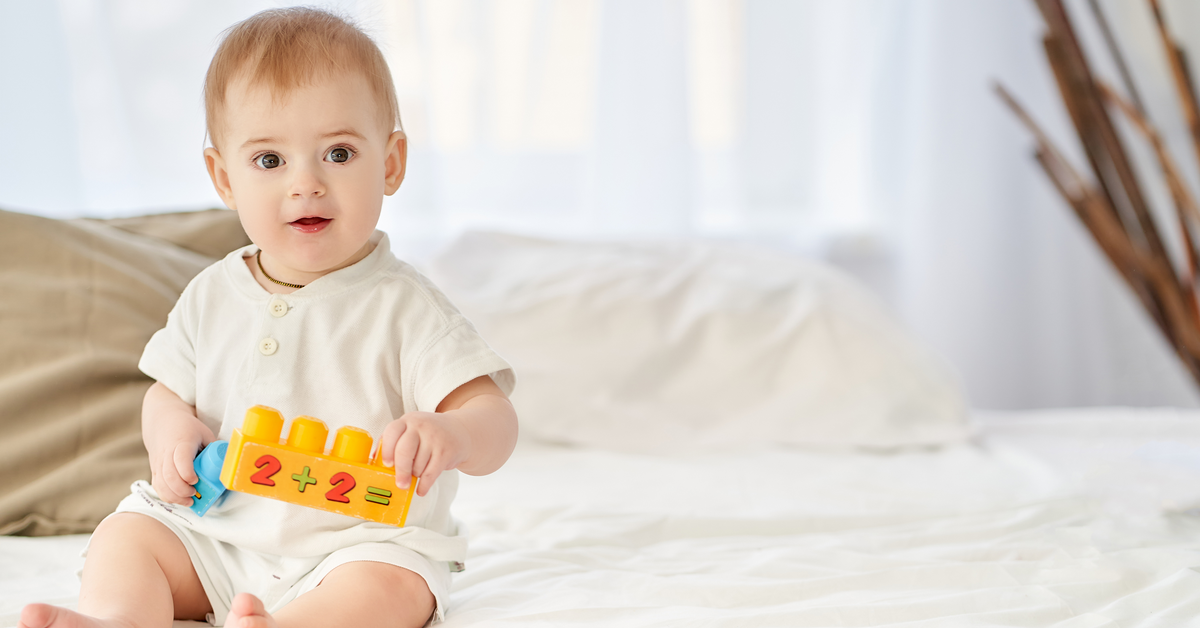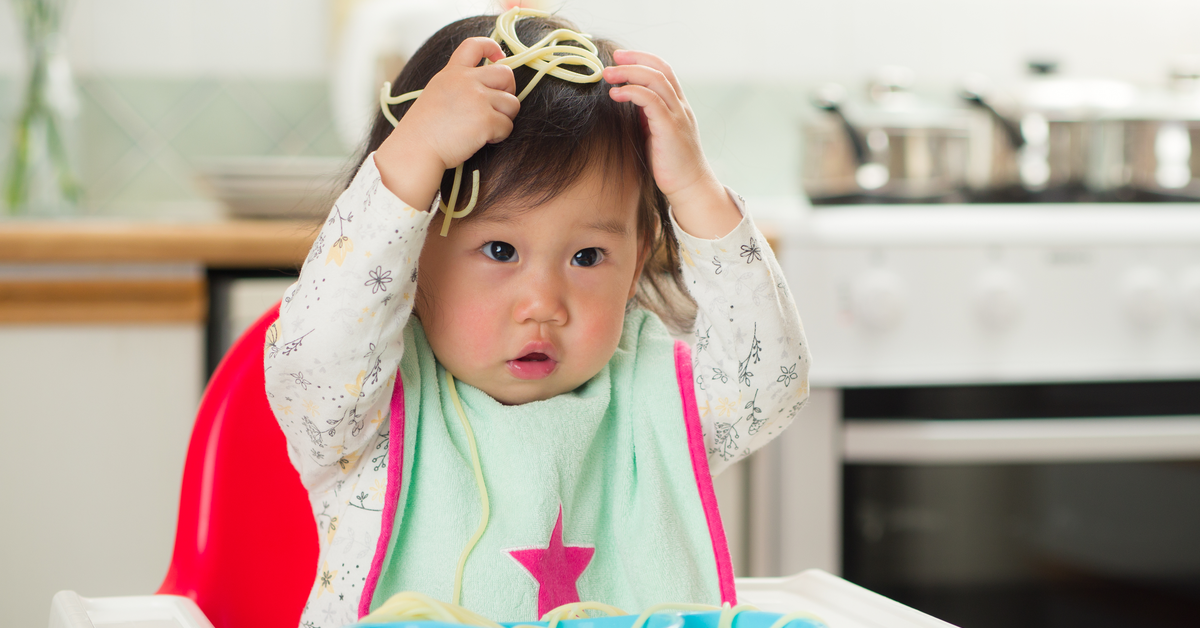When will my baby say “mommy” and “daddy?” When will my little one walk? While you were worrying about questions like these and were trying to cope with all the sleepless nights, the time flew by, and suddenly, your little one is about to turn two. Isn’t it wonderful that he has gained so many skills in such a short time? Babies grow incredibly quickly and suddenly acquire skills that surprise you.
Although their abilities differ from baby to baby, there are some milestones that a baby should reach each month. Carefully monitoring your baby’s development is important to allow for an early diagnosis of mental and physical disorders, such as autism, intellectual disabilities, language and speech disorders, etc., which are usually diagnosed between fifteen and twenty-four months. Knowing what to expect in terms of development between twenty-one and twenty-three months will help you find some peace of mind and enjoy the time with your baby.
What should your baby be able to do? What can you do to contribute to his development? We will discuss all this and more in this article.
Measurements at 23 Months
The increase in gross motor skills influences your little one’s weight, as he enjoys his freedom and constantly moves and runs around the house. Both weight gain and loss are considered normal to a certain extent and are influenced by factors like disease, teething, climate and genetic factors.
A baby’s weight and length must stay within the World Health Organization (WHO) limit values. You should regularly follow up on your baby’s physical development with your family doctor or paediatrician. If his measurements diverge greatly from the standard, you should consult a specialist because this may indicate other health problems and impact your baby’s overall development.
| Gender | Length | Weight | Head Circumference |
| Girl | 79 cm – 91 cm | 9.5 kg – 14.5 kg | 45 cm – 50 cm |
| Boy | 81 cm – 93 cm | 10.5 kg – 15.5 kg | 46 cm – 51 cm |
Cognitive Development by 23 Months
- Your little one is starting to understand the concept of place and direction and can follow more complex instructions such as “please, go to the kitchen, take your blue plate and bring it to me” by visualising the sequence of events in his mind. To stimulate this skill, you can play object-hiding games and give your little one hints and instructions to find the objects. You can also ask him to put away his toys in the right place after playing.
- He understands the concept of colours better now and can consciously match two or three colours. He will also start using different colours while colouring and painting.
- He can use both hands to complete a task. For example, while inserting a string into a hole, he can push it with one hand and pull it through the loop with the other. For this activity, you can use a colourful shoelace and any ring-shaped cereal or soft-boiled pasta. Avoid using beads around this age, as they may form a choking hazard. You can make edible bracelets with your baby and gift them to your loved ones. They will love it.
Language Development by 23 Months
Your baby is undergoing a rapid increase in memory capacity. He is adding new words to his vocabulary daily and can say between 50 and 100 words. You can stimulate his language development by conversing and asking him questions regularly.
Your toddler will start using some personal pronouns (such as I and you) in their sentences. You can stimulate this by correctly using pronouns in your speech, such as “I came home, and then you left.”
For your baby to learn his mother tongue correctly, make sure not to speak back to him in baby language and repeat his mistakes. At the same time, avoid correcting your baby explicitly as he may lose confidence in speaking. Instead, when he says, for example, “I goed granny,” you can reply, “Ah, you went to visit granny, how wonderful!”
Psychomotor Development Between 21 and 23 Months
- Your little one’s walking, running, and balancing skills continuously improve. The right choice of shoes is very important to support his physical development and ensure his balance and comfortable movement. Therefore, it is best to opt for well-fitting orthopaedic shoes.
- You can try to teach your little one to climb stairs, leading with one foot. If your baby has trouble climbing the stairs like this, you can safely postpone teaching this skill for a while.
- Your little one has further developed his fine motor skills. You can stimulate these skills further by setting up glueing and sticking activities. Apply some glue on paper or cardboard and ask your toddler to make a collage with shredded paper or cut-out objects. You can use a simple glue stick. You can also buy a sticker book with colourful stickers for your child.
- Your baby will probably love animals. To encourage his love for animals, you can draw, paint and name animals together. You can enliven the animals by making animal puppets. For this, cut out the drawings, paste them onto cardboard, and attach a stick to the back. And now roar like a lion, neigh like a horse, and have a lot of fun!
Social-Emotional and Self-Care Development
You may have seen babies dancing to songs. How cute and happy they look, don’t they? This is at a time when your little one discovers such talents. All you have to do is play some music he loves and happily dance along with him.
Although your baby has difficulty putting on his coat and cardigan, he can now successfully remove them. Attach a hook at his height at the entrance to encourage him to hang his jacket and a shoe rack to put away his shoes. In this way, you strengthen his ability to acquire self-care skills and give him a sense of responsibility.
Your little one may leave his toys lying around after playing, and your house may be more chaotic than ever. Also, food and drinks may spill on the floor regularly. Challenging as this may be, try to be aware of your reactions to this behaviour, as these affect his personality development. Being patient and using positive sentences encourage him to experiment, discover and learn.
Your baby is learning fast and experimenting a lot. This may sometimes trigger and upset you. In such cases, try to implement I-statements in your communication. For example, instead of saying, “You keep creating a big mess!” say, “I need some help collecting toys here.”
Play and Activities between 21 and 23 Months

- Paint two toilet rolls and two paper towel rolls in the colours your toddler knows. Stick these rolls upright on cardboard paper. Fill up a few storage boxes with materials in these same colours, like pompons, small toys, coloured paper, etc. Help your child to throw these into the rolls of the same colour. You can also throw the larger toys in the paper towel rolls and the smaller ones in the toilet rolls. With this activity, you can help your child to reinforce his understanding of colours and the big-small concept.
- Another activity you can do with coloured toilet rolls is the Parking Lot Game. Take some rope in the same colours and create twisty paths with them. Fix one end of the string to the roll of the same colour and fix the other end with some tape to the floor. This is the starting point. Take some small cars in the same colours and let your little one drive them via the rope towards the garage of the right colour.
- Take some coloured felts and cut out a large face, different pairs of eyes, noses, mouths, hair, teardrops, eyebrows, ears, etc. Then create different facial expressions by arranging the face parts and naming the feelings it expresses. This is a fun way to teach your child about emotions.
- Babies generally love helping with household chores. You can encourage your little one to help you by giving him plastic dishes and utensils to rinse while washing dishes or a cloth for dusting.
Nutrition between 21 and 23 Months
Providing adequate and balanced nutrition to your child from an early age contributes to his growth and development and will also help him later in life. The most effective way to achieve this is to be a proper role model. Studies have shown that children of families who are used to eating an adequate and balanced diet are most likely to develop good eating habits.
Your child’s diet should consist of dairy products, vegetables and fruits, white and red meat, fish, eggs, legumes, bread, cereals, and healthy fats.
At this stage, your baby is busy getting to know food with all his senses. He doesn’t only taste them but also loves to touch and smell them and even listen to the different sounds they make. You can make a meal more enjoyable by preparing finger foods your baby can easily hold by cutting cucumbers, (boiled) carrots, tomatoes, apples, pears, etc. into portions the size of your little finger.
Consuming 500 ml of dairy products contributes to developing your child’s teeth and bones.
The wide variety of vitamins, minerals and fibres in vegetables and fruits of different colours supports your baby’s healthy development and the proper functioning of his digestive system. At this age, a child should consume 300-400 g of fruit and vegetables.
Meat, fish, and eggs contribute to your little one’s mental and physical development while helping to strengthen their immune system because of their high protein content. It is sufficient for children at this age to daily consume 60-70 g of these foods.
As his mobility skills increase, your baby needs a lot of energy. Therefore, bread, cereals, pasta, rice, potatoes, and other carbohydrate-rich foods are important for meeting the daily energy needs of your baby. Consuming about 125-150 gr of these foods is sufficient.
Opting for healthy fats from a young age is very important to prevent cardiovascular diseases and diabetes. Using olive oil to prepare your little one’s meals will help prevent such ailments.
Sleep between 21 and 23 Months
Although each baby’s sleep needs vary, they usually sleep eleven to thirteen hours daily, including a one- to two-hour nap. Around this age, some babies do not want to go to sleep and continue playing and spending time with their loved ones. Therefore, it’s important to have some wind-down, calm activities close to bedtime, facilitating the transition to sleep. In addition, if your child has trouble sleeping at night, you can also try reducing their naps. Telling stories and singing soothing lullabies also helps your little one fall asleep.
Being conscious and careful about your behaviour, actions and reactions positively impacts your baby’s development. Each baby’s developmental pace and stages are different. Therefore, avoid comparing your child with other children. Nevertheless, closely monitoring your baby’s development is very important. Knowing the developmental milestones between twenty-one and twenty-three months will help you with this.
Shopping Advice – What to Buy?
Sticker books allow your baby to peel and stick and help develop fine motor skills. Arts and crafts materials like felt, stick glue, finger paint, etc. will allow you to get creative and prepare endless activities for your little one. Baby-sized household items are great for developing your child’s interest in imitating what you do: a set of plastic plates and utensils, a small broom and mop, a play kitchen, etc., will provide hours of fun. And stimulate your little one’s self-care skills by hanging a hook at his height and placing a low shoe rack.
It’s Your Turn Now – Write a Comment!
How are you raising your baby between 21 and 23 months? What challenges did you experience? How did you overcome them? We welcome your comments so that other caregivers can learn.
Don’t Forget to Share!
Don’t forget to share our 21 to 23 month-old baby development article so that expectant parents and other caregivers can read and learn!







